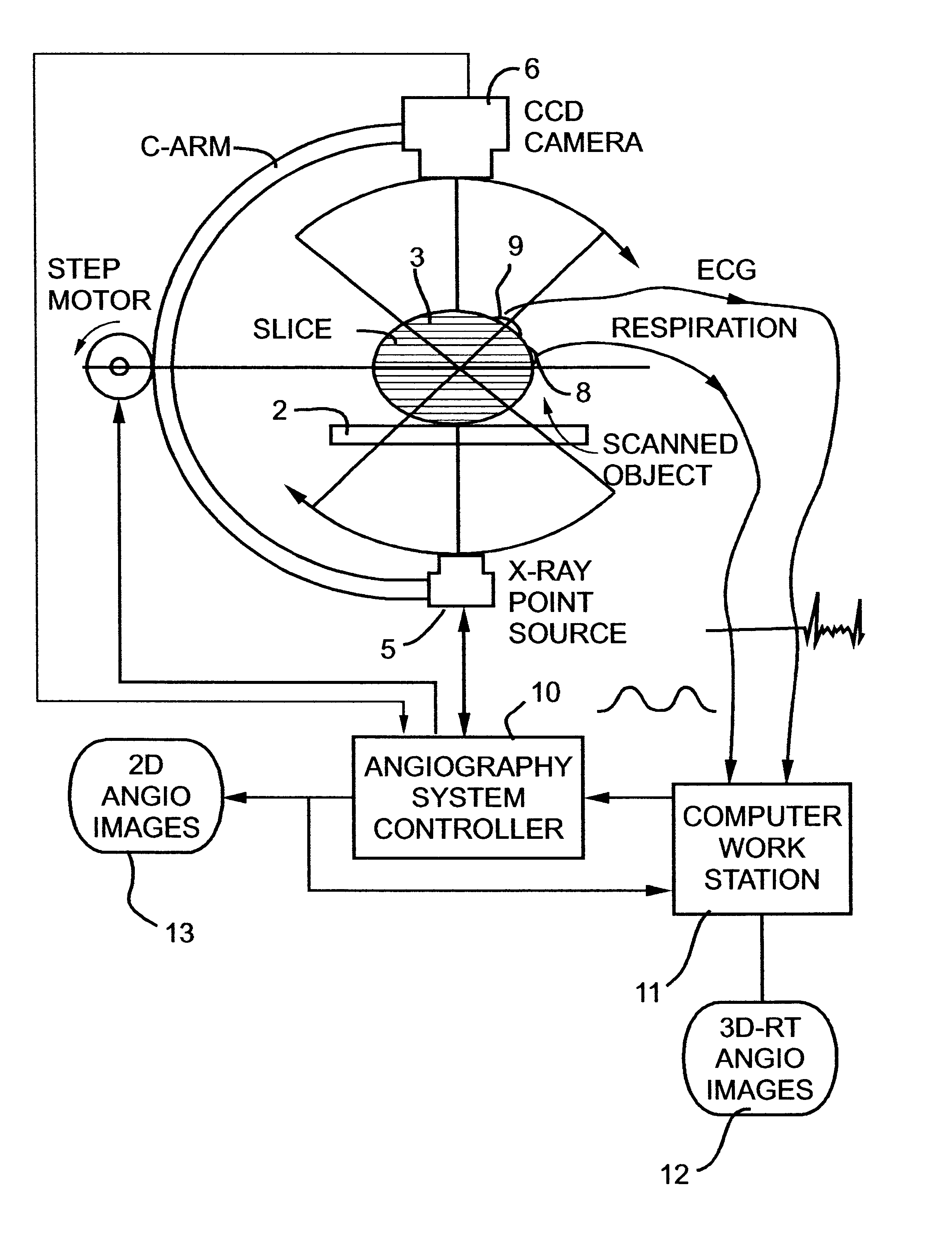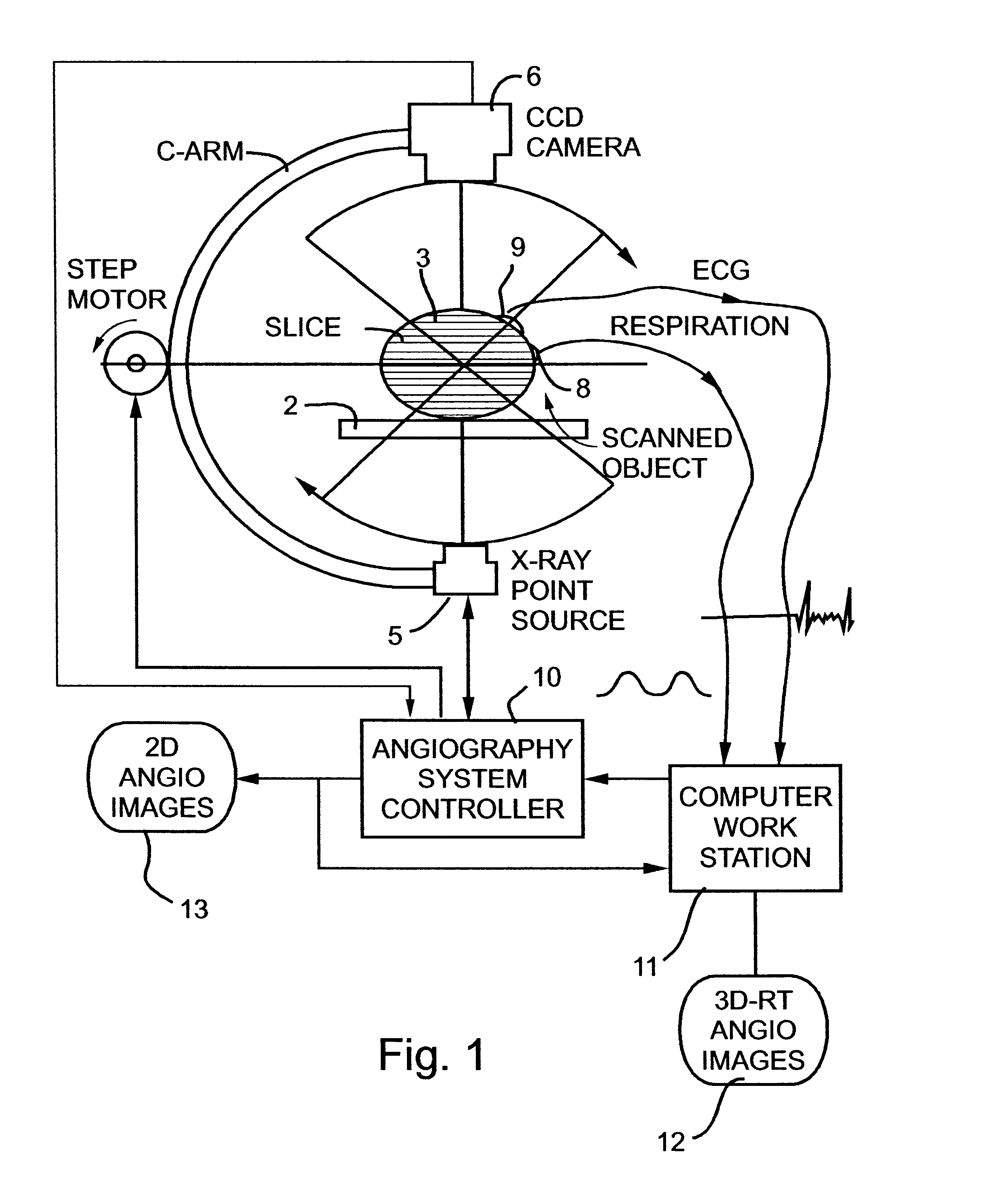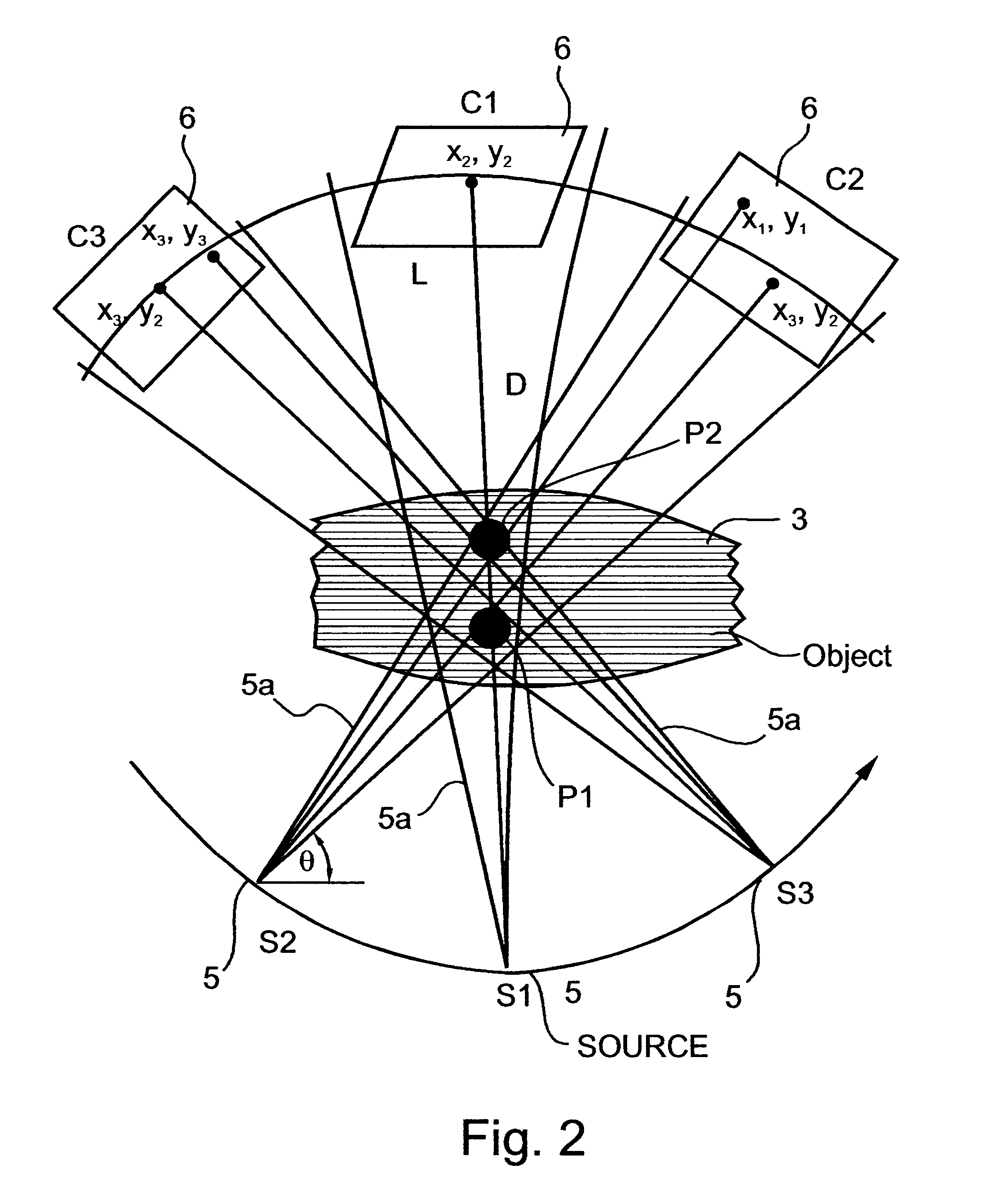Imaging methods and apparatus particularly useful for two and three-dimensional angiography
a three-dimensional image and imaging method technology, applied in the direction of liquid/fluent solid measurement, diagnostics, sensors, etc., can solve the problems of inconvenient operation, inconvenient operation, and inability to produce a three-dimensional image, etc., to achieve enhanced contrast-to-noise ratio and enhance the cnr of the produced image
- Summary
- Abstract
- Description
- Claims
- Application Information
AI Technical Summary
Benefits of technology
Problems solved by technology
Method used
Image
Examples
Embodiment Construction
The Embodiment of FIGS. 1-10
FIG. 1 schematically illustrates one form of apparatus constructed in accordance with the present invention particularly useful for producing three-dimensional angiographs of a patient's vascular system.
The system illustrated in FIG. 1 includes a horizontal support 2 for the patient 3 under examination, and a gantry C-arm 4, such as used in CT examination apparatus, straddling the patient's body 3. The C-arm supports a radiation source 5 at one side of the patient's body, and a radiation detector 6 at the opposite side and in alignment with the radiation source. The radiation source 5 is an X-ray point source which produces a conical beam 5a as shown in FIG. 2; and the radiation detector 6, preferably a CCD camera, includes a two-dimensional matrix of detector elements as best seen in FIG. 4. As shown particularly in FIG. 2, the conical beam 5a produced by the radiation source 5 in each angular position is sufficiently large to cover all the detector elem...
PUM
 Login to View More
Login to View More Abstract
Description
Claims
Application Information
 Login to View More
Login to View More - R&D
- Intellectual Property
- Life Sciences
- Materials
- Tech Scout
- Unparalleled Data Quality
- Higher Quality Content
- 60% Fewer Hallucinations
Browse by: Latest US Patents, China's latest patents, Technical Efficacy Thesaurus, Application Domain, Technology Topic, Popular Technical Reports.
© 2025 PatSnap. All rights reserved.Legal|Privacy policy|Modern Slavery Act Transparency Statement|Sitemap|About US| Contact US: help@patsnap.com



